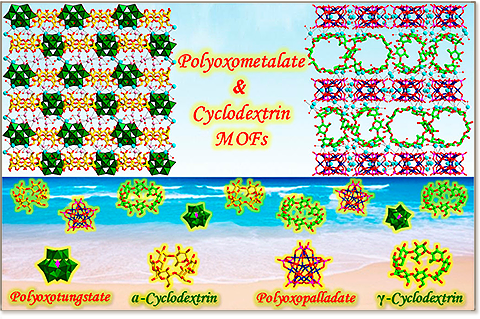


Self-assembly allows structures to organize themselves into regular patterns by using local forces to find the lowest-energy configuration. However, assembling organic and inorganic building blocks in an ordered framework remains challenging due to difficulties in rationally interfacing two dissimilar materials. Herein, the ensemble of polyoxometalates (POMs) and cyclodextrins (CDs) as molecular building blocks (MBBs) has yielded two unprecedented POM-CD-MOFs, namely [PW12O40]3– and α-CD MOF (POT-CD) as well as [P10Pd15.5O50]19– and γ-CD MOF (POP-CD), with distinct properties not shared by their isolated parent MBBs. Markedly, the POT-CD features a nontraditional enhanced Li storage behavior by virtue of a unique “amorphization and pulverization” process. This opens the door to a new generation of hybrid materials with tuned structures and customized functionalities.